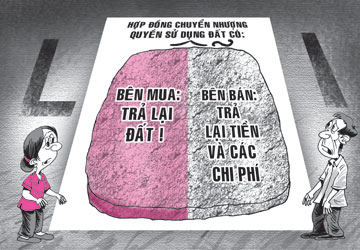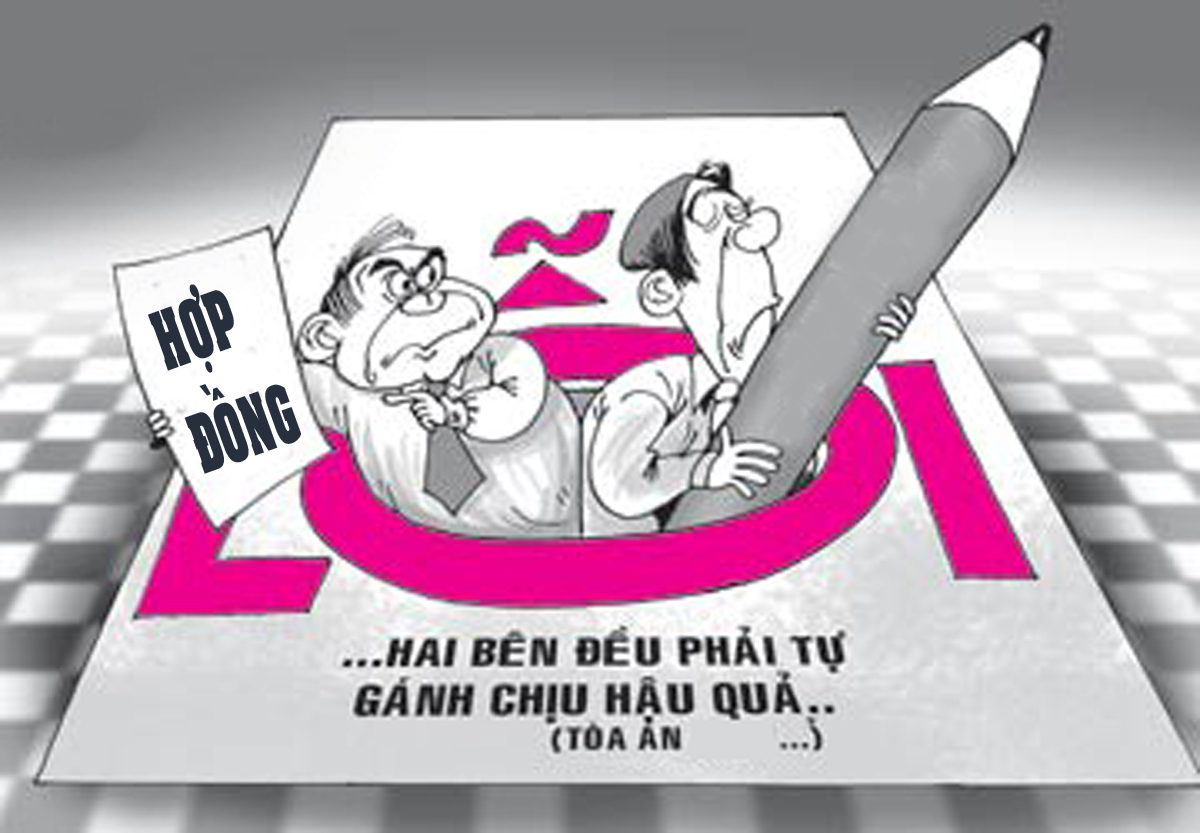Precedent No. 15/2017/AL originates from the Appellate Review Decision 394/2012/DS-GDT dated August 23, 2012, regarding the case of "Land Exchange Contract Dispute" in Hanoi City, issued according to Decision 299/QD-CA in 2017 on the publication of precedents.
Precedent No. 15/2017/AL on Recognizing the Verbal Agreement of the Parties in the Agricultural Land Use Right Transfer
Approved by the Judicial Council of the Supreme People's Court on December 14, 2017, and published according to Decision No. 299/QD-CA dated December 28, 2017 of the Chief Justice of the Supreme People's Court.
Source of Precedent:
Supervisory Review Decision No. 394/2012/DS-GDT dated August 23, 2012, of the Civil Court of the Supreme People's Court regarding the "Dispute over Land Exchange Contract" in Hanoi between the plaintiff, Mrs. Trinh Thi C, and the defendant, Mr. Nguyen Minh T; other related parties include Mrs. Vu Thi P, Mr. Nguyen Minh Tr, Ms. Bui Thanh H, Ms. Truong Thi X, Mr. Truong Sy K, Ms. Truong Hong T, Ms. Truong Thi H1, Mr. Truong Anh T, Ms. Truong Thuy N, Mr. Truong Quang K, and Mrs. Truong Thi H2.
Position of Precedent Content:
Paragraphs 1, 2 of the "Court's Assessment" section.
Overview of the Precedent Content:
- Situation of the Precedent:
The parties voluntarily verbally agreed to transfer agricultural land use rights before October 15, 1993 (the effective date of the 1993 Land Law); have registered and declared the exchanged land area and recorded it in the cadastral register; have directly cultivated and used it stably, continuously, and long-term.
- Legal Solution:
In this case, the court must recognize the parties' verbal agreement on the transfer of agricultural land use rights to determine that the parties have the right to use the exchanged land area.
Legal Provisions Related to the Precedent:
- Clause 2, Article 16 of the 1987 Land Law.
- Clause 2, Article 170 of the 2005 Civil Code.
Keywords of the Precedent:
"Agricultural land use right transfer”; “Practical transfer of land use rights”; “Recognizing land use rights”
CASE CONTENT:
According to the lawsuit filed on May 2, 2006, and other statements during the case resolution process, the plaintiff, Mrs. Trinh Thi C, presented:
In 1962, Mrs. Trinh Thi C’s family was allocated 517m² of parcel No. 28, map sheet No. 4, in area K, which was 5% land for cultivation. This land was adjacent to Mr. Nguyen Minh T's (defendant) house. According to the 1987 map, this land was on parcels 158 and 159. In early 1992, Mr. Nguyen Minh T’s family proposed temporarily exchanging this 5% land with a 540m² land plot allocated under Contract 10 in area B for more convenient cultivation. Both parties verbally agreed, without paperwork, to temporarily exchange the land with a one-week notice for return when needed. By 1994, due to her family’s production needs, Mrs. Trinh Thi C requested the land’s return, but Mr. Nguyen Minh T's family did not agree. Mrs. Trinh Thi C complained to the commune and district authorities, but the issue was not definitively resolved. Therefore, Mrs. Trinh Thi C requested the court to compel Mr. Nguyen Minh T's family to return the land to her family according to the law.
The defendant, Mr. Nguyen Minh T, presented:
According to Contract 10 policy, Cooperative D allocated land to households in early 1991. During the implementation, the cooperative guided households to exchange land with each other. In about February 1992, Mr. Nguyen Minh T’s family and Mrs. Trinh Thi C’s family verbally agreed to the land exchange as the plaintiff explained. After the land exchange, Mr. Nguyen Minh T turned it into a pond and relocated over ten graves to the village cemetery. In May 1994, there was a policy to declare the cultivated land of each household according to the 1993 Land Law for each family’s cadastral tax registry. At that time, Mrs. Trinh Thi C registered the exchanged land in area B, and Mr. Nguyen Minh T registered the exchanged land of Mrs. Trinh Thi C’s family along with his family’s existing land. By the end of 1994, Cooperative D issued a land allocation document stating that Mr. Nguyen Minh T’s family and Mrs. Trinh Thi C’s family had exchanged land. Mr. Nguyen Minh T’s family has been directly cultivating the land since 1992. Hence, Mr. Nguyen Minh T did not accept the plaintiff’s land return request.
The related party, Mrs. Truong Thi H2, presented: The land in area K originated from her parents’ allocation in 1962. After her father’s death, her brother (Mr. A) held the land title. In 1990-1991, 100m² was split for her. Mrs. Trinh Thi C’s complete land exchange with Mr. Nguyen Minh T was incorrect, and she now claims it back.
At the first-instance judgment No. 17/2008/DSST on August 20, 2008, the People’s Court of Hoang Mai District ruled:
“1. Declares the oral agricultural land exchange between the 5% land and Contract 10 land established between Mrs. Trinh Thi C’s family and Mr. Nguyen Minh T’s family in February 1992 null and void.
Compels Mr. Nguyen Minh T's family to return the 5% land of 517m², parcel No. 28, map sheet No. 4, 1990 cadastral map in area K, now block 33, ward L, district M, Hanoi, to Mrs. Trinh Thi C’s family.
Compels Mrs. Trinh Thi C’s family to return the Contract 10 land of 540m², part of parcel No. 80, map sheet No. 42-A2 (abbreviated as sheet 2), 1994 cadastral map in area B, ward L, district M, Hanoi, to Mr. Nguyen Minh T’s family.
Compels Mrs. Trinh Thi C to pay the land improvement fee, including pond excavation, ground levelling, tree planting, and grave relocation, totaling VND 112,817,000 (one hundred twelve million eight hundred seventeen thousand) to Mr. Nguyen Minh T.
Compels Mr. Nguyen Minh Tr and Ms. Bui Thanh H to dismantle the entire rough-built house of 75.28m² on the 517m² land of parcel No. 28, map sheet No. 4, 1990 cadastral map to return the land to Mrs. Trinh Thi C’s family. Mr. Nguyen Minh Tr and Ms. Bui Thanh H are not compensated for the dismantled house area.”
Mr. Nguyen Minh T appealed the entire first-instance judgment.
At the appellate judgment No. 111/2008/DSPT on November 27, 2008, the Hanoi City People’s Court ruled: to uphold the first-instance judgment.
Additionally, the appellate court also ruled on court fees.
After the appellate trial, Mr. Nguyen Minh T filed a complaint against the above appellate civil judgment.
In Decision No. 482/2011/KN-DS dated August 2, 2011, the Chief Justice of the Supreme People’s Court filed a protest against the above appellate civil judgment; recommending the Civil Court of the Supreme People’s Court to quash the appellate civil judgment and the first-instance civil judgment; and to remand the case file to the Hoang Mai District People’s Court for retrial according to the law.
At today’s hearing, the Supreme People’s Procuratorate representative agreed with the Chief Justice’s protest content.
COURT'S ASSESSMENT:
[1] After examining the case file and deliberation, the Civil Chamber agreed with the protest content: there is a basis to determine that the land exchange between the parties was voluntary, stemming from their cultivation needs. After the land exchange, the parties registered, declared, and documented the exchanged land area in the cadastral register and directly cultivated and used it stably, continuously from 1992 till now. During the land use period, Mr. Nguyen Minh T relocated the graves on the land and transformed part of it into a fish pond.
[2] In practical terms, the land exchange began around February 1992. However, the evidence in the case file shows that the parties completed registration and declaration procedures for the exchanged land areas at the local authorities from 1994 and conducted other procedures such as land document handover and tax declaration from 1994. In this case, the land exchange should have been recognized as a practical exchange, acknowledging the parties' right to use the exchanged land area correctly and relevantly. The first-instance and appellate courts, based on Mrs. Trinh Thi C's statements, determined the land exchange was temporary, thus declaring the land exchange illegal, annulling the land exchange transaction, and ordering the parties to dismantle houses and return land to each other was inaccurate, causing unnecessary disturbance in the land use of the parties.
Based on the above reasons;
Pursuant to Clause 2, Article 291, Clause 3, Article 297, and Article 299 of the Civil Procedure Code;
DECISION:
Quash the entire Appellate Civil Judgment No. 111/2008/DSPT dated November 27, 2008, of the Hanoi City People’s Court and the First-Instance Civil Judgment No. 17/2008/DSST dated August 20, 2008, of the Hoang Mai District People’s Court, Hanoi, regarding the “Land Exchange Contract Dispute” between the plaintiff, Mrs. Trinh Thi C, and the defendant, Mr. Nguyen Minh T.
Remand the case file to the Hoang Mai District People’s Court, Hanoi, for retrial according to the law.
PRECEDENT CONTENT
"[1]. The land exchange between the parties was voluntary, arising from their cultivation needs. After the land exchange, both parties registered, declared, and documented the exchanged land area in the cadastral register and directly cultivated, used it stably, continuously from 1992 till now. During land use, Mr. Nguyen Minh T relocated the graves on the land and transformed part of it into a fish pond.
[2]. In practical terms, the land exchange existed around February 1992. However, the evidence in the case file shows that the parties completed registration and declaration for the exchanged land areas at local authorities from 1994, along with other procedures such as land document handover and tax declaration from 1994. In this case, the land exchange should have been recognized as a practical exchange, acknowledging the parties' right to use the exchanged land appropriately and accurately. The first-instance and appellate courts based on Mrs. Trinh Thi C's statements, determined the land exchange was temporary, leading to an incorrect conclusion that the land exchange was illegal, thereby annulling the transaction and ordering the parties to dismantle houses and return land to each other inaccurately, causing unnecessary disturbance in the parties' land use."
 Article table of contents
Article table of contents




.jpg)

.Medium.png)
.Medium.png)
.Medium.png)
.Medium.png)
